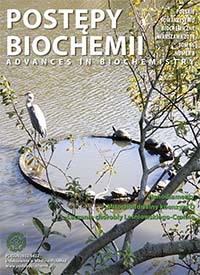Exosomes as a new approach into cell-to-cell communication within the mammalian ovary
DOI:
https://doi.org/10.18388/pb.2019_276Abstract
The ovarian follicle filled with follicular fluid creates an optimal environment for oocyte growth and maturation. Follicular fluid contains a wide range of biologically active molecules that regulate the functions of the oocyte and somatic cells in the ovarian follicle. Recently it has been confirmed that exosomes are present in the follicular fluid of human and animals. These nanosized, spherical structures surrounded by a lipid bilayer, carry an active biological charge as proteins, lipids, carbohydrates and genetic material. Due to the ability to passive migration in body fluids, exosomes move a long distances in the body and modulate the function of target cells. The importance of exosomes in the ovarian follicle is still not fully understood. To date their communication role and impact on physiological and pathological processes in the ovary are suggested. Research on follicular fluid derived exosomes provides an opportunity to better understand the processes in which they are involved within the follicle. In addition, the potential clinical application of exosomes, including treatment and diagnosis of female reproductive system diseases, leads scientists to further research.
Downloads
Published
Issue
Section
License
All journal contents are distributed under the Creative Commons Attribution-ShareAlike 4.0 International (CC BY-SA 4.0) license. Everybody may use the content following terms: Attribution — You must give appropriate credit, provide a link to the license, and indicate if changes were made, ShareAlike — If you remix, transform, or build upon the material, you must distribute your contributions under the same license as the original. There are no additional restrictions — You may not apply legal terms or technological measures that legally restrict others from doing anything the license permits.
Copyright for all published papers © stays with the authors.
Copyright for the journal: © Polish Biochemical Society.




